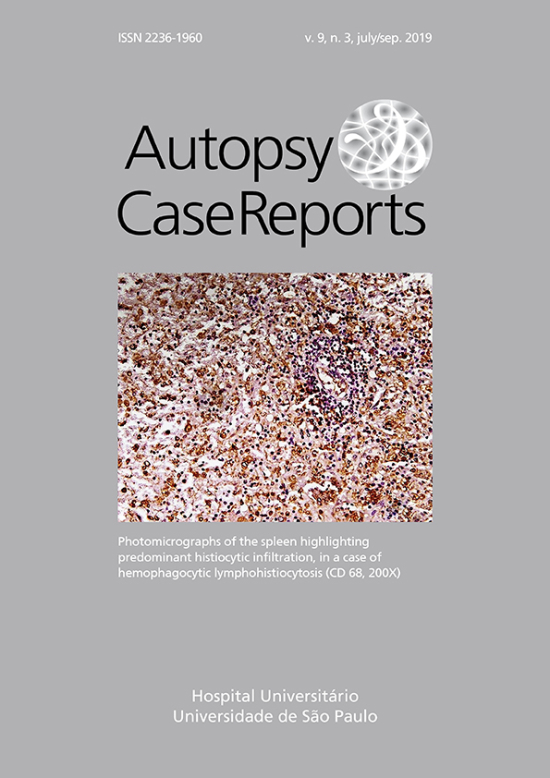The importance of the postmortem interval for the diagnosis of Waterhouse–Friderichsen syndrome by Neisseria meningitidis in a series of forensic cases
DOI:
https://doi.org/10.4322/acr.2019.103Keywords:
Autopsy, Forensic Microbiology, Waterhouse-Friderichsen Syndrome, Post-Mortem IntervalAbstract
The effective value of microbiological post-mortem examinations stands as fundamental in forensic cases involving microbiology. We ran these analyses on five victims, who suddenly died after showing persistent fever. The examinations were conducted between 48 hours and 10 days after death, and adrenal gland apoplexy was detected in all the cases. Microbiological examinations identified Neisseria meningitidis, which was accountable for Waterhouse–Friderichsen syndrome. Diplococci were isolated from three cadavers that underwent forensic dissection between 2 and 3 days after death. The remaining two cadavers showed polymicrobial contamination, and a polymerase chain reaction technique was necessary to identify the pathogen. We assumed that the microbial overlap could lead to diagnostic mistakes and conceal the identification of the lethal pathogen. Therefore, we suggest using molecular techniques for a postmortem interval (PMI) longer than 72 hours. Classical microbiological examination should be performed for PMI within 72 hours.
Downloads
Published
Issue
Section
License
Copyright
Authors of articles published by Autopsy and Case Report retain the copyright of their work without restrictions, licensing it under the Creative Commons Attribution License - CC-BY, which allows articles to be re-used and re-distributed without restriction, as long as the original work is correctly cited.



